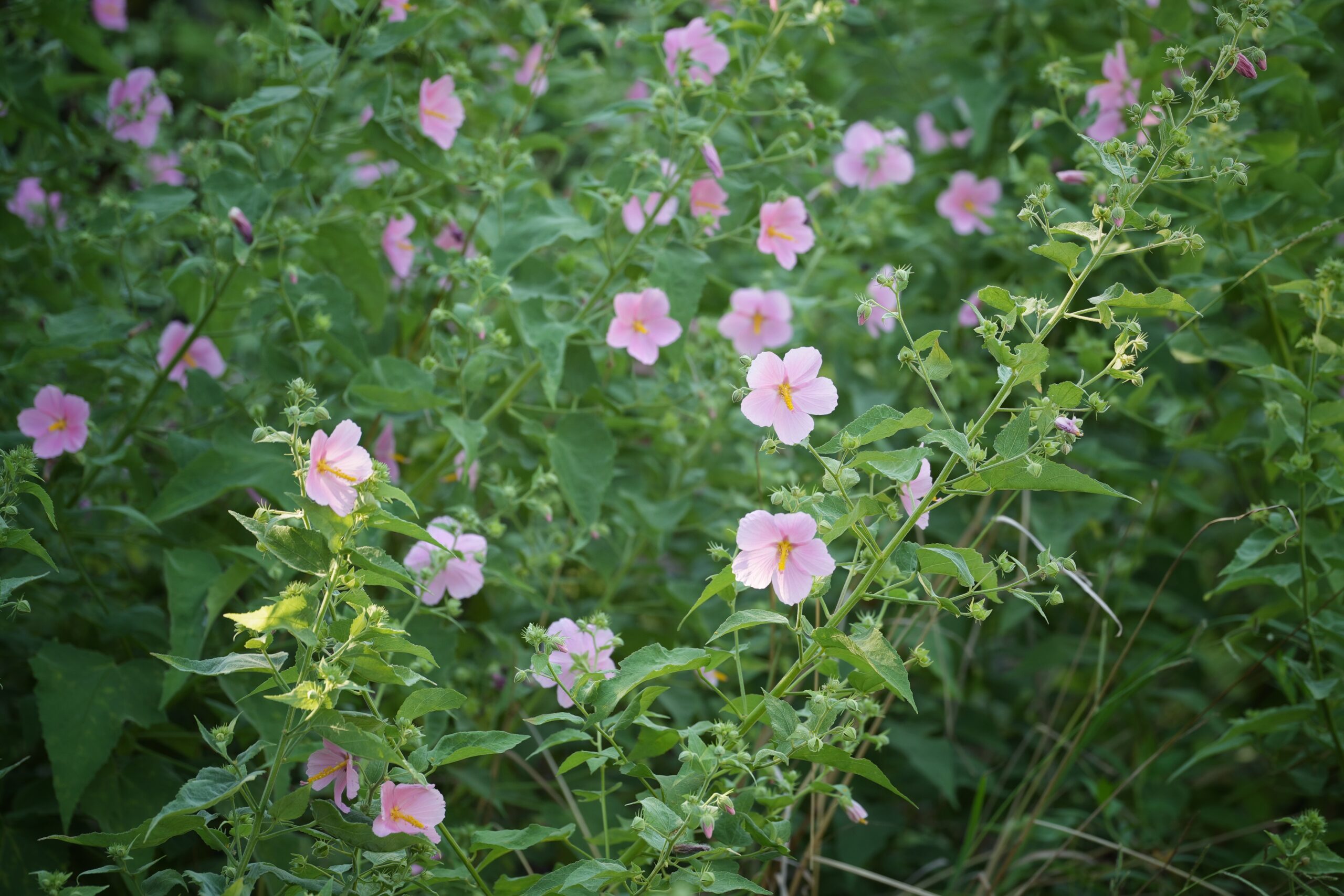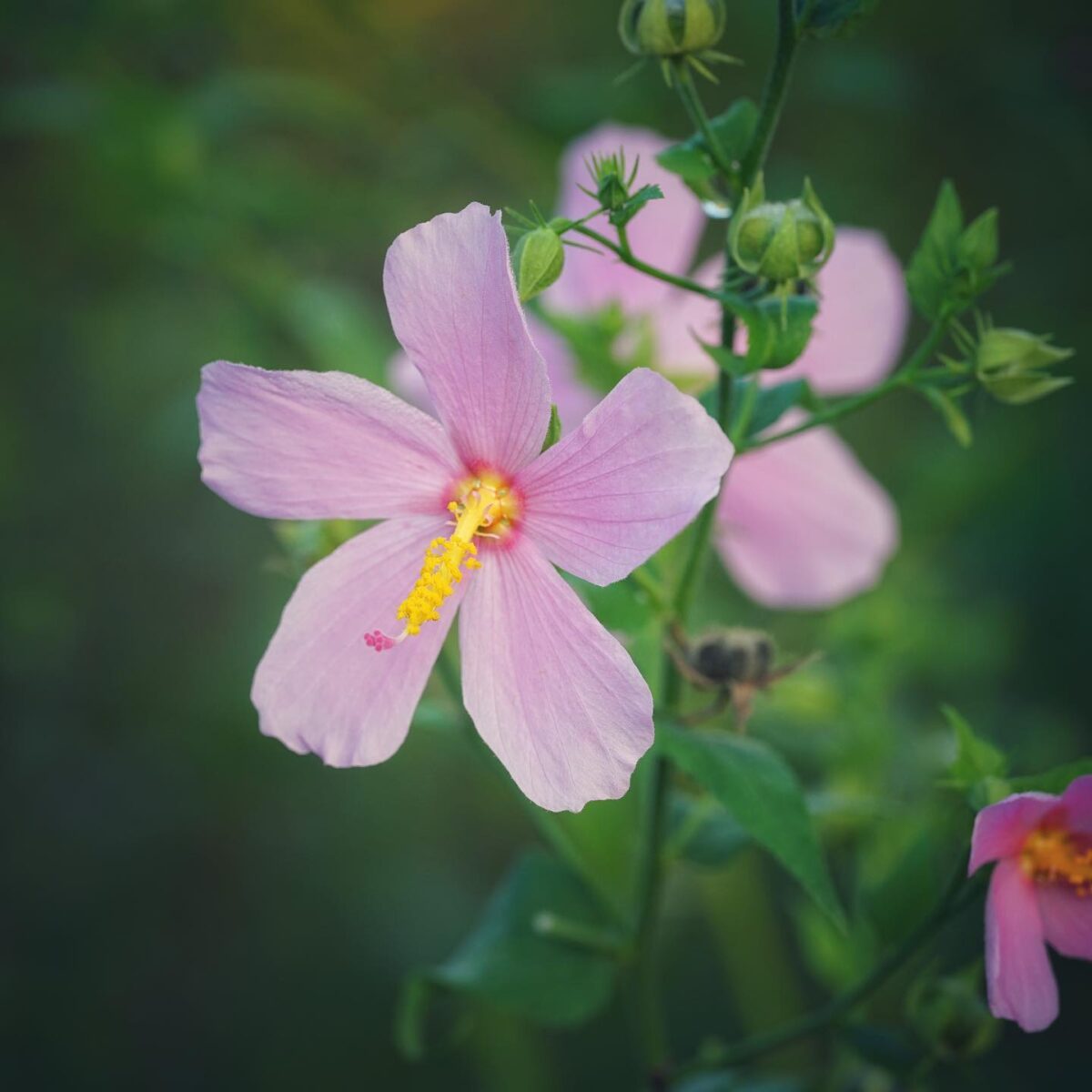Virginia saltmarsh mallow
Pictured above: Virginia saltmarsh mallow (Kosteletzkya pentacarpos) by Emily Bell. Click on terms for botanical definitions. View post as a PDF.
Virginia saltmarsh mallow is a shrub-like wildflower with showy pink blooms. It occurs naturally in salt and freshwater marshes, swamps, sloughs, coastal swales and wet thickets throughout much of the state. It blooms spring through fall, peaking in summer and attracting butterflies, hummingbirds and ants.
Flowers are 2–3” in diameter with pale to deep pink petals. They are solitary, nodding and may be axillary or terminal. Stamens are yellow and born along a central tube-like column that surrounds the pistil. The pink style and stigmas extend up through the tube and out its top. Leaves are petiolate, deltoid to rhomboid with an acute apex. They are alternately arranged. Leaf margins may be entire or irregularly toothed. Stems and leaf surfaces are pubescent. Fruit is a flat, five-chambered capsules; each capsule bears a single seed.
Virginia saltmarsh mallow is often confused with Swamp hibiscus (Hibiscus grandiflorus) because of its similar appearance and habitat. They can be differentiated by Kosteletzyka’s flattened capsule and generally smaller flower. H. grandiflorus flowers tend to have a darker center. K. pentacarpos was originally named Hibiscus pentacarpos. Plants in the genus Kosteletzkzya were separated from Hibiscus in 1835. It has also previously been named Kosteletskya virginica and may still be listed as such in some resources. Thorough notes on its nomenclature can be found here.
Virginia saltmarsh mallow is almost entirely edible and has many practical uses. Its flowers can be steeped into a tea or eaten raw — they make a lovely adornment to salads. The leaves can be eaten raw but are best when cooked as they are tough and mucilaginous. They can be used to thicken soups or stews. Roots are edible raw or cooked. If boiled, the leftover water can be used as an egg-white substitute. The seed oil is being studied as a potential edible oil and has been used as a biofuel and in paints and varnishes. Stem fibers have been used to make string.
Family: Malvaceae (Mallow family)
Native range: Nearly throughout
To see where natural populations of Virginia saltmarsh mallow have been vouchered, visit florida.plantatlas.usf.edu.
Lifespan: Short-lived perennial
Soil: Moist to wet well- to poorly drained soils
Exposure: Full sun
Growth habit: 2–6’ tall, up to 4’ wide
Propagation: Seed, cuttings
Florida regions of landscape suitability: North, Central, South
Garden tips: Virginia saltmarsh mallow can be used in a wetland wildflower or butterfly garden but is best suited for naturalistic and restoration landscapes. It is deciduous and will die back in winter. The plant can tolerate exposure to salt and periods of inundation, but is not drought tolerant.
Plants may be available from nurseries that specialize in Florida native plants. Visit www.PlantRealFlorida.org to find a nursery in your area. Seeds may be available from the Florida Wildflower Growers Cooperative at www.FloridaWildflowers.com.


